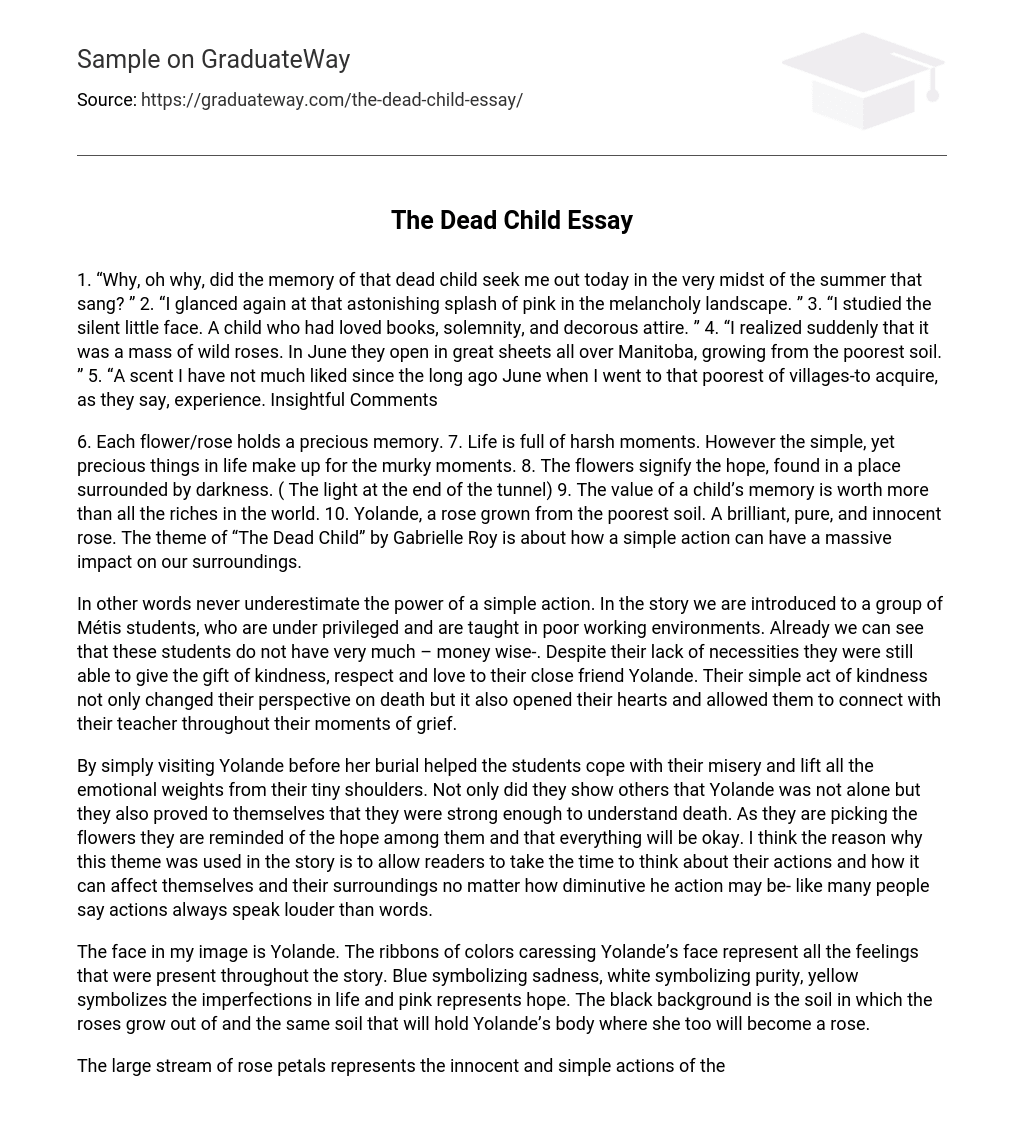“Why, oh why, did the memory of that deceased child come to me today amidst the summer that was singing?”
“I looked once again at that remarkable burst of pink in the pensive scenery.”
“I examined the quiet little face. A child who had adored books, seriousness, and proper clothing.”
“I suddenly realized that it was a cluster of untamed roses. In June, they bloom abundantly all over Manitoba, flourishing in even the most infertile soil.”
“A fragrance that I haven’t particularly enjoyed since that distant June when I went to that impoverished village, in order to gain, as they say, experience.” Insightful Comments
6. Every flower or rose represents a cherished memory. 7. Life consists of difficult moments, but the simple yet valuable aspects of life compensate for the challenging times. 8. These flowers symbolize the hope that can be found even in the midst of darkness (similar to the concept of a light at the end of a tunnel). 9. The worth of a child’s memory surpasses all the wealth in the world. 10. Yolande, a rose nourished from impoverished soil, is a splendid, pure, and innocent flower. The underlying message in Gabrielle Roy’s “The Dead Child” is that even a small action can have a profound impact on our environment.
In summary, one should always remember the impact a small action can have. The story introduces us to a group of Métis students who are economically disadvantaged and receive education in inadequate conditions. It is evident that these students have few material possessions. However, despite their lack of resources, they managed to offer Yolande, a dear friend, the gifts of kindness, respect, and love. This display of compassion not only altered their perception of death but also enabled them to form a deep connection with their teacher during their shared moments of sorrow.
Visiting Yolande before her burial helped the students cope with their misery and lift the emotional weights from their shoulders. It showed others that Yolande was not alone and proved they were strong enough to understand death. Picking flowers reminded them of hope and that everything would be okay. This theme in the story encourages readers to reflect on their actions and how it can impact themselves and their surroundings, regardless of how small the action may be. As many people say, actions always speak louder than words.
The face in the image is Yolande. The colors embracing Yolande’s face symbolize the various emotions depicted in the story. Blue represents sadness, white signifies purity, yellow symbolizes life’s imperfections, and pink represents hope. The black background resembles the soil from which the roses grow and where Yolande’s body will eventually rest, becoming a rose herself.
The large stream of rose petals symbolizes the innocent and simple actions of the children. When picturing a stream, one often imagines it to be calm and quiet. However, upon closer observation, streams are abundant and filled with life, just like the students in the story. The tiny bits of roses represent all the memories the children shared with Yolande, with each rose petal contributing to the creation of a larger rose. In the end, the children gather in a circle around Yolande and find solace in comforting one another, saying, “She must have reached heaven by now.”
Or, “The child must be happy now. It is amazing and captivating for a child to feel such maturity. These emotions have left a lasting mark on the rose, symbolizing an important moment in their lives – the moment they learned to handle grief and death. Through their acts of kindness, each child’s memories, emotions, and actions become a beautiful rose. These examples connect to the theme by showcasing the incredible experiences and accomplishments the children and teacher were able to have through a simple action despite their emotional and mental challenges.”





